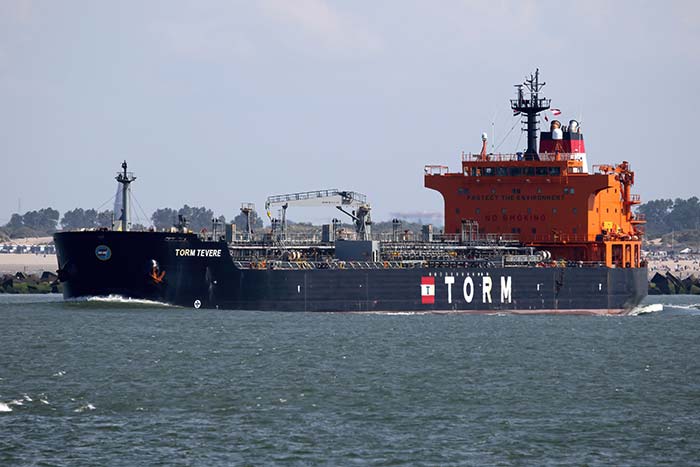Danish oil tanker company Torm (Nasdaq: TRMD) pays a juicy 9% yield, so it’s obvious why income investors would be attracted to the stock. But they may want to have the Dramamine nearby.
The 136-year-old company saw its free cash flow decline last year from $295 million to $244 million. It paid out $553 million in dividends for a deeply concerning 226% payout ratio. In other words, for every $1 in free cash flow it took in, Torm paid out $2.26 in dividends. That’s insane.
This year, free cash flow is projected to grow to $376 million, which is good news, but that’s still well below the $553 million it paid in dividends last year (and Wall Street forecasts the dividend payout to be even higher this year).
The dividend has been all over the place. Torm paid semiannual dividends in 2016, 2017, and 2020, with no dividend paid in 2018, 2019, or 2021. Since 2022, when it began paying quarterly dividends, the payout has been cut six times.
Torm’s dividend safety has two giant obstacles going against it. The first is the board’s variable dividend policy. By itself this isn’t a bad thing, but it means that the dividend will fluctuate, so investors can’t rely on it being the same every quarter.
Second, the company simply can’t afford its dividend. It claims that its payout ratio for the first quarter was 64%, which on an earnings-per-share basis is correct.
Earnings is the established metric to calculate the payout ratio, but it is very flawed. Earnings include all kinds of noncash items like depreciation, stock-based compensation, and, importantly, sales for which a company has not yet been paid. Cash flow is how much cash a company actually took in. You can’t pay a dividend with accounts receivable.
Since Torm’s dividend is so much higher than its cash flow and its dividend policy is variable, investors should count on further cuts to the company’s dividend in the future. Even if the dividend is raised sometime in the next year, it will definitely be lowered again.
Dividend Safety Rating: F

What stock’s dividend safety would you like me to analyze next? Leave the ticker in the comments section.
You can also take a look to see whether we’ve written about your favorite stock recently. Just click on the word “Search” at the top right part of the Wealthy Retirement homepage, type in the company name, and hit “Enter.”
Also, keep in mind that Safety Net can analyze only individual stocks, not exchange-traded funds, mutual funds, or closed-end funds.


